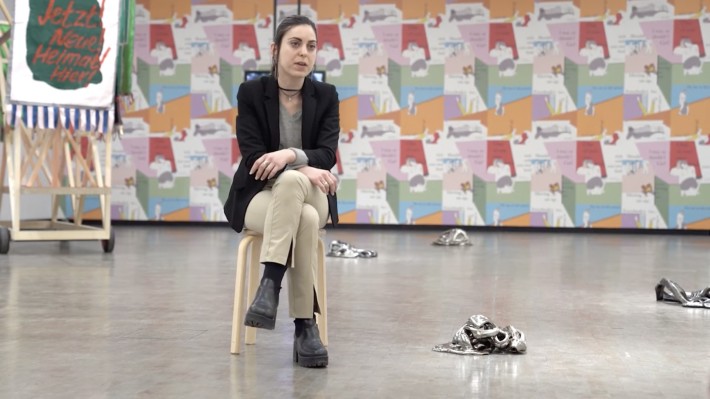In her artistic practice, Monika Grabuschnigg departs almost exclusively from clay – a natural material which is ecological and recyclable. Grabuschnigg likes to exhaust its various tactilities and in her treatment of the material often plays with a dialectic between analog and virtual realities. The organic material is seemingly in contradiction to the digital age, where the smooth and perfect acts as a societal anesthetic. She intuitively picks up on physical desires and metaphysical beliefs that are now all too often dictated, or at the very least directed, by suspiciously all-knowing algorithms reassembling them into spatial and tactile narratives. In “Crash (Simulation)”, the malleable source material is deceptively translated into metallic objects. Deformed wheel rims that have come to a halt on the floor, or are leaning against walls, paint an apocalyptic scene, suggesting the aftermath of a world on fire. Grabuschnigg’s sculptures imply that our desire for speed and an exponentially increasing acceleration are leading us onto a dangerous path – and one that could lead to disastrous consequences. Deformed by heat and melted into useless relics after having been engulfed by flames, the hubcaps – once a source of pride and status – tell a tale of a society that in an excess of speed, physical and virtual, is able to travel across continents, from night to day, in milliseconds. This existence functions as a 24-hour high, but instead of the aspired freedom and endless opportunities, it is ultimately confronted by a total system overload. Grabuschnigg’s “Crash (Simulation)” may well be a cautionary tale, but perhaps the fractal shapes and organic materials also contain a soothing silver lining referring to elements and principles that have long pre-dated and will long outlive humanity.
Monika Grabuschnigg
... of bread, wine, cars, security and peace

